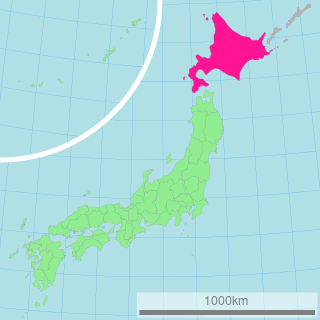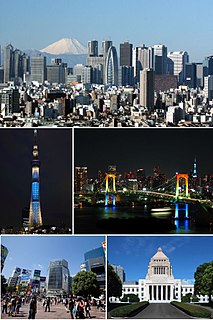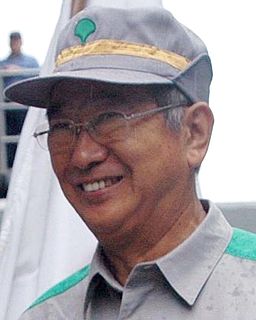The Japanese political process has three types of elections: general elections to the House of Representatives held every four years, elections to the House of Councillors held every three years to choose one-half of its members, and local elections held every four years for offices in prefectures, cities, and villages. Elections are supervised by election committees at each administrative level under the general direction of the Central Election Administration Committee, an attached organization to the Ministry of Internal Affairs and Communications (MIC). The minimum voting age in Japan's non-compulsory electoral system was reduced from twenty to eighteen years in June 2016. Voters must satisfy a three-month residency requirement before being allowed to cast a ballot.
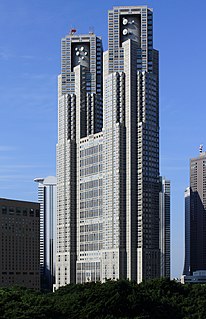
The Tokyo Metropolitan Government is the government of the Tokyo Metropolis, one of the 47 prefectures of Japan. The government consists of a popularly elected governor and assembly. The headquarters building is located in the ward of Shinjuku. The metropolitan government administers the 23 Special Wards of Tokyo, as well as the other cities and towns that constitute the prefecture. With a population closing in on 14 million living within its boundaries, and many more commuting from neighbouring prefectures, the metropolitan government wields significant political power within Japan.
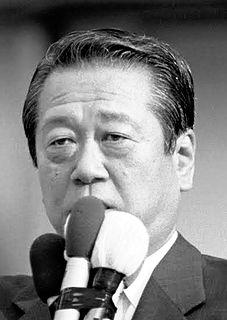
The 21st Elections to the House of Councillors for the upper house of the legislature of Japan were held on July 29, 2007. The date was originally to be July 22, but the ruling Liberal Democratic Party (LDP) decided in mid-June to extend the session of the House for a week to finish up legislative business; this step was criticised due to the short-term delay.
Yuko Sato is a Japanese politician and member of the Genzei Nippon party. She previously served one term in the House of Representatives of Japan's national Diet and currently serves on the Nagoya city council in Aichi Prefecture.
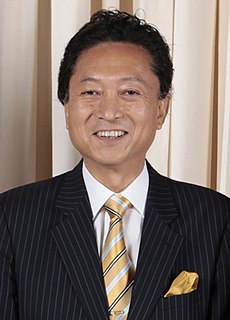
A general election for the Japanese House of Representatives was held on August 30, 2009. The opposition Democratic Party (DPJ) defeated the ruling coalition in a sweeping victory, winning 221 of the 300 electoral districts and receiving 42.4% of the proportional block votes for another 87 seats, a total of 308 seats to only 119 for the LDP.
Prefectural elections for the Tokyo Metropolitan Assembly were held on 12 July 2009. In the runup to the Japanese general election due by October they were seen as an important test for Taro Aso's ruling coalition of the Liberal Democratic Party (LDP) and the New Komeito. New Komeito considers Tokyo as an important stronghold and had repeatedly asked Prime Minister Aso to avoid holding the two elections within a month of each other.

The Osaka Restoration Association, also referred to as One Osaka, is a regional political party in Osaka Prefecture, Japan. Founded in 2010 by then-Governor Tōru Hashimoto, its main platform is pursuing the Osaka Metropolis plan of merging the prefecture and some of its cities into "One Osaka" and reducing overlapping bureaucratic organizations of Osaka Prefecture and the city of Osaka.
The 17th unified local elections in Japan took place in April 2011. In the first phase on April 10, 2011 12 governors, 41 prefectural assemblies as well as five mayors and 15 assemblies in cities designated by government ordinance were elected. In the second phase on April 24, 2011 mayors and/or assemblies in hundreds of cities, cities of Tokyo, towns and villages were up for election. Additionally, a by-election for the National Diet was held in Aichi on April 24.
The Shikoku proportional representation block is one of eleven proportional representation (PR) "blocks", multi-member constituencies for the House of Representatives in the Diet of Japan. It consists of Shikoku region covering Tokushima, Kagawa, Ehime and Kōchi Prefectures. Following the introduction of proportional voting it elected seven representatives in the 1996 general election. When the total number of PR seats was reduced from 200 to 180, the Shikoku PR block shrunk to six seats.
Events in the year 2012 in Japan.

The 23rd Elections to the House of Councillors for the upper house of the National Diet, the legislature of Japan, was held on July 21, 2013. In the last election in 2010, the Democratic Party of Japan (DPJ) remained the largest party, but the DPJ-led ruling coalition lost its majority. The House of Councillors is elected by halves to six year terms. In 2013, the class of Councillors elected in 2007 was up.
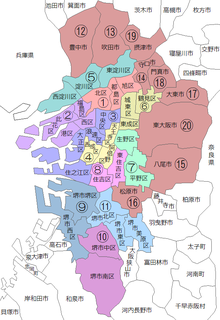
The Osaka Metropolis plan or Osaka Metropolis is a plan to transform Osaka Prefecture from a fu, an urban prefecture, into a to, a metropolis. Under the initially envisioned plan, Osaka city, Sakai city, and other surrounding cities in Osaka prefecture, were to be dissolved and – similarly to Tokyo urban wards within Tokyo – subdivided into special wards that have a status as municipalities but leave some municipal tasks and revenues to the prefectural administration. As political resistance grew, notably the opposition to the plan in Sakai city expressed in the 2013 mayoral election, the concrete plan was reduced to, at least as a first step, abolish only Osaka city. As in Tokyo, the metropolis would have continued to include all other municipalities of the prefecture and serve as prefectural government for them.
Yoshikatsu Nakayama is a Japanese politician and member of the House of Representatives for Tokyo 2nd district.
Genzei Nippon is a regional political party based in Nagoya, Japan and led by the mayor of Nagoya, Takashi Kawamura. The party was formed by Kawamura in April 2010. After briefly holding several seats in the national legislature, the party merged at the national level with the Tomorrow Party of Japan in November 2012. Genzei Nippon remained a separate party at the regional level and has been active within Aichi Prefecture. As well as Kawamura, the party has twelve members serving on the Nagoya city council.

The 47th general election of members of the House of Representatives of Japan was held on 14 December 2014. Voting took place in all Representatives constituencies of Japan including proportional blocks, in order to appoint Members of Diet to seats in the House of Representatives, the lower house of the National Diet of Japan. As the cabinet resigns in the first post-election Diet session after a general House of Representatives election, the lower house election also led to a new designation election of the prime minister in the Diet, and the appointment of a new cabinet. The turnout in this election is the lowest in Japanese history.

The 24th regular election of members of the House of Councillors was held on Sunday 10 July 2016 to elect 121 of the 242 members of the House of Councillors, the upper house of the 717-member bicameral National Diet of Japan, for a term of six years. As a result of the election, the LDP/Komeito coalition gained ten seats for a total of 146, the largest coalition achieved since the size of the house was set at 242 seats.

The Hyogo Prefectural Assembly is the prefectural parliament of Hyogo Prefecture.
The 2015 Hyōgo prefectural election was an election for the Hyogo Prefectural Assembly held on 12 April 2015 as part of the 2015 unified local elections in Japan. The election saw the number of assembly members reduced from 89 to 87 and the number of electoral districts reduced from 41 to 40. Voting was held in 23 districts and representatives for the remaining 17 districts were elected unopposed. The election was held in the wake of the political expenses scandal that was exposed in July 2014 involving multiple assembly members and was notable for former assemblyman Ryutaro Nonomura's outburst of uncontrolled sobbing at a news conference.

Prefectural elections for the Tokyo Metropolitan Assembly were held on 2 July 2017. The 127 members were elected in forty-two electoral districts, seven returning single members elected by first-past-the-post, and thirty-five returning multiple members under single non-transferable vote. Four districts had their magnitude adjusted in this election to match population changes.
A gubernatorial election was held on 10 June 2018 to elect the next Governor of Niigata. Incumbent Governor Ryuichi Yoneyama resigned on 18 April 2018 in the wake of a sex scandal. This was also the first gubernatorial election in Niigata since the voting age was lowered to 18.




